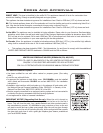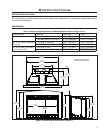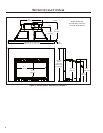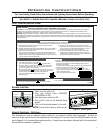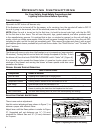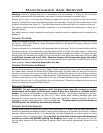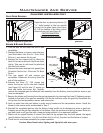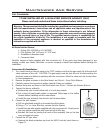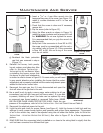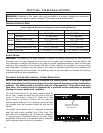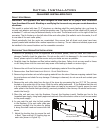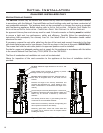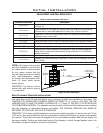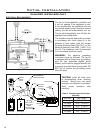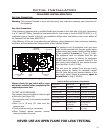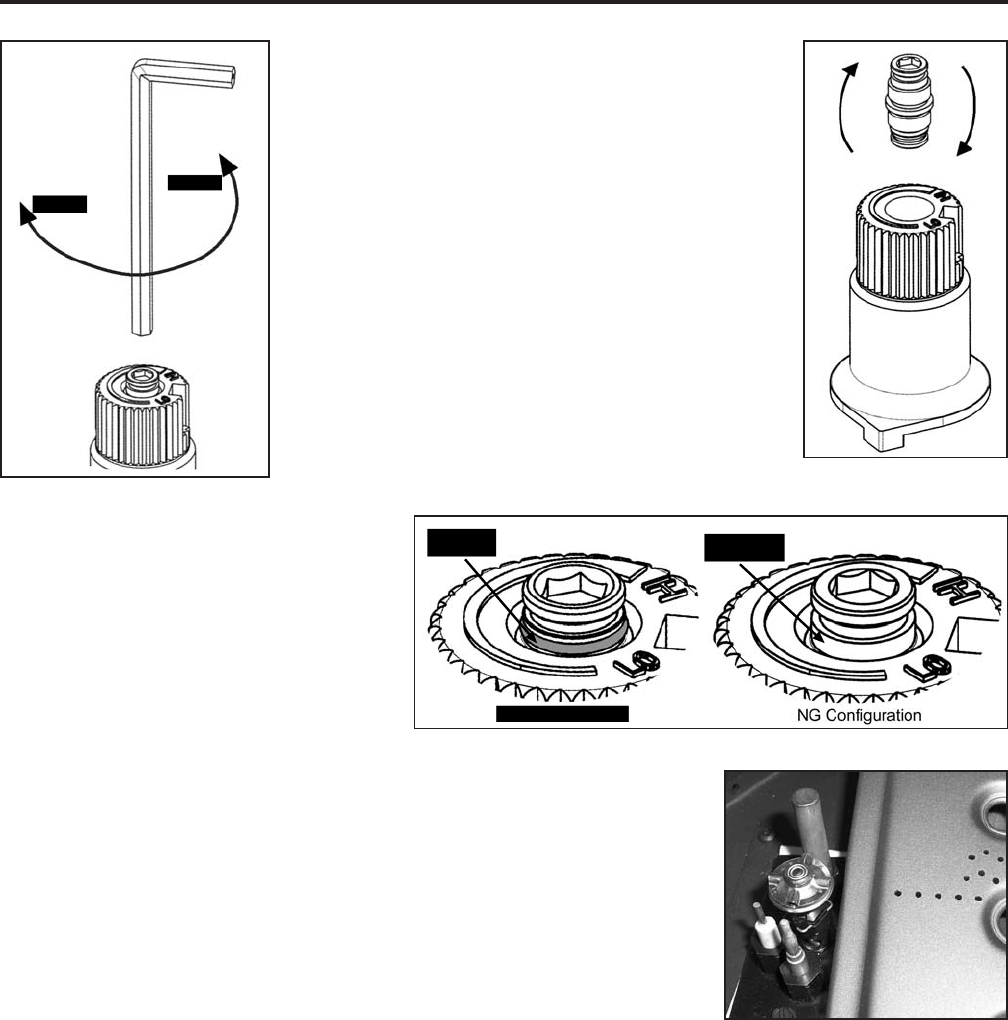
12
Maintenance And Service
b) Insert a
5
/32” or 4 mm Allen wrench into the
hexagonal key-way of the screw (see Figure 12),
rotate it counter-clockwise until it is free and
extract it.
c) Check that the screw is clean and if necessary
remove dirt.
d) Flip the screw (refer to Figure 13).
e) Using the Allen wrench as shown in Figure 12,
rotate the screw clockwise until a torque of 9 inch
lbs. WARNING! Do not over tighten the screw.
It is recommended that you grip the wrench by
the short side.
f) Verify that if the conversion is from NG to LPG,
the screw must be re-assembled with the red o-
ring visible (refer to Figure 14). If the conversion
is from LPG to NG, the red o-ring of the screw
must be not visible.
Figure 13: Flip valve
screw.
Red o-ring
is not visible
Red o-ring
is visible
LPG Configuration
g) Re-attach the black protection
cap that was removed in step a
(Figure 11).
8. Reinstall the burner, brick panels,
log set, embers, and glass door. Also
refer to SECONDARY INSTALLATION -
INSTALLING LOG SET AND EMBERS. When
re-installing the burner, ensure that
the burner to pilot hood relationship
Figure 14: O-ring on valve screw.
is similar to what is shown in Figure 15. On some units you will need
to pay special attention when installing the burner that the venturi
adjustment rod is properly installed into the venturi adjustment piece
welded to the burner venturi tube
9. Reconnect the main gas line if it was disconnected and open the
shut-off valve at the gas line to the unit.
10. Use a small brush to apply a warm soapy water solution to all gas
connections (use half dish soap and half warm water). If a gas leak
is present, bubbling will occur. Gas leaks can be repaired by using
an approved pipe thread sealant or approved Teon tape. NEVER
USE AN OPEN FLAME WHEN TESTING FOR LEAKS. Check the gas
Loosen
Tighten
Figure 12: Removing valve
screw.
pressure of the appliance, refer to INITIAL INSTALLATION - GAS LINE CONNECTION and Table 5.
11. Reconnect the electrical power to the unit.
12. Light the pilot and check for proper ames (see Figure 4). Light the burner in both high and low
settings to verify proper burner ignition and operation and proper ame appearance. The amount
of air to the venturi may need to be adjusted using the rod under the rebox (refer to OPERATING
INSTRUCTIONS - ADJUSTING VENTURI AIR SETTINGS). Also refer to Figure 37 for a flame appearance
picture.
13. MAKE SURE that the conversion label is installed on or close to the rating label to signify that the
unit has been converted to a different fuel type.
Figure 15: Burner to pilot hood
relationship.



